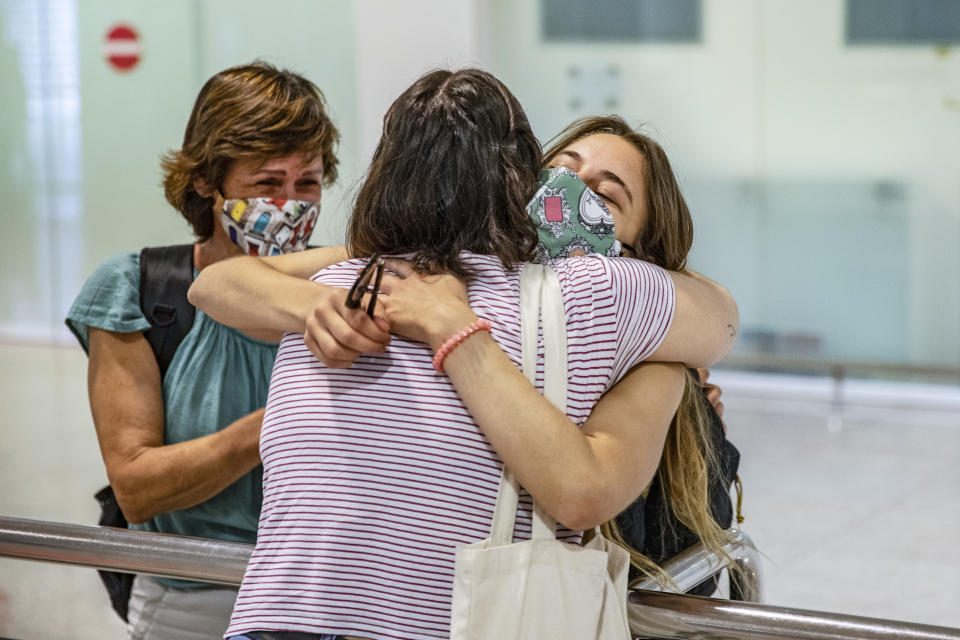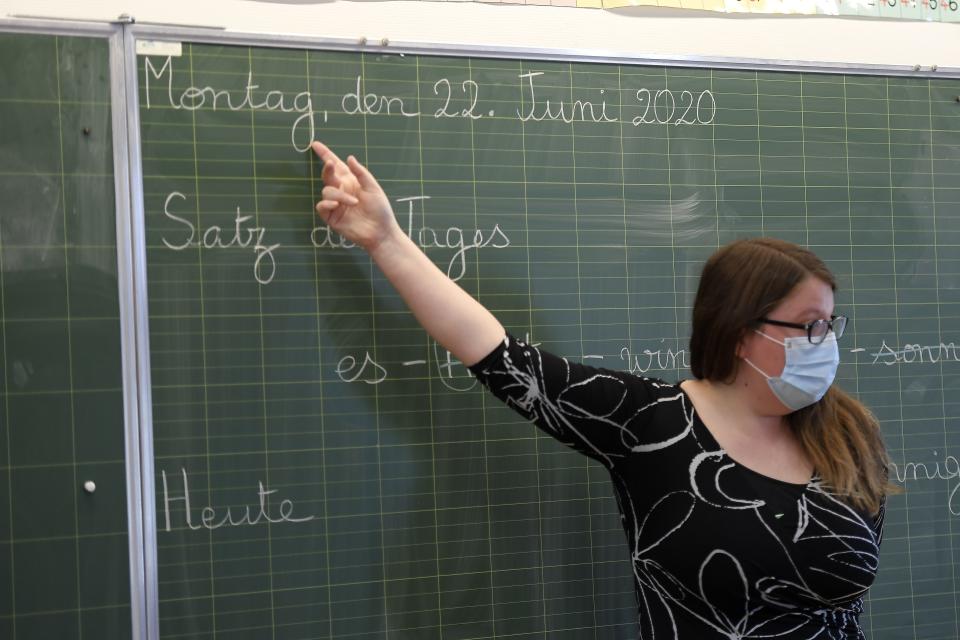What is the risk of a second coronavirus wave?

The coronavirus outbreak has put the UK on lockdown since 23 March, however, falling fatalities mean restrictions are gradually relaxing.
Groups of no more than six people from different households are permitted to mingle outside, with Britons also allowed to take unlimited outdoor exercise.
Some primary school children are back in the classroom, months after the final bell rang on 20 March.
Boris Johnson is also expected to announce on 23 June whether pubs and restaurants can reopen on 4 July, albeit with social distancing in place.
While all positive progress, many cannot help but be concerned this relaxation will inevitably lead to a dreaded second wave of infections.
Early research suggests the coronavirus is mild in four out of five cases, however, it can trigger a respiratory disease called COVID-19.

What is a second wave?
Coronavirus deaths are thought to have peaked in England on 8 April, when around 800 people died with the infection in hospital.
While fatalities have been declining ever since, infection numbers may creep back up down the line.
An infectious wave has no set definition.
It is broadly considered a rise in cases, followed by a decline, which may occur several times over until an effective vaccine is rolled out.
The start of a second wave is usually said to take place after an initial outbreak has been brought under control, rather than the two bleeding into each other.
New Zealand is not thought to be in a second wave after a handful of cases emerged following 24 days of no new infections.
Beijing is also not said to be in a second wave after patients tested positive following 50 “virus-free” days.
“The outbreak in Beijing serves as a reminder that, despite the UK having passed through the first wave of COVID-19, we still remain in the early stages of the pandemic”, said Dr Tom Wingfield from the Liverpool School of Tropical Medicine.
Professor Keith Neal from the University of Nottingham said, however, Beijing’s cluster was, “not a second wave but a localised outbreak.
“It does depend on how you define a second wave though,” he added.
What is the risk of a second wave in the UK?
The UK’s coronavirus alert level was reduced from four out of five to three on 19 June.
“We are likely to be entering a new phase of this outbreak,” said Professor Matt Keeling from the University of Warwick.
“Nationally and regionally cases will continue to decline, but locally there will be isolated clusters of cases that need to be contained”.
A level three alert means the coronavirus is circulating, but is low enough to allow the gradual easing of restrictions.
“The move to level three is not a time for complacency, there is still the prospect of a second wave if controls are relaxed too quickly and the reproductive number (R) rises above one,” said Professor Keeling.
The R is the number of people a patient statistically goes on to infect. If more than one, an outbreak grows; if one, the outbreak plateaus; and if less than one, the outbreak dies out.
Only around 5% of Britons are thought to have caught the coronavirus in its first and ongoing wave, which is insufficient for herd immunity.
It is also unclear how long immunity lasts, however, it is expected to be at least for the short or intermediate term.
A second wave could be triggered if lockdown is lifted too quickly, something government officials have repeatedly stressed they are not prepared to risk.
While closing pubs, shutting borders and cutting off social contact undoubtedly brings cases down, the impact it has had on the economy and people’s mental health cannot be underestimated.
Nevertheless, Dr Mike Tildseley from the University of Warwick told the BBC if measures are lifted too quickly, a second wave could occur as soon as August.
Officials are aiming to balance a return to “normality” with continuing to ward off infections.
This may be achievable by enforcing social distancing once the hospitality sector gets going, as well as the move to make face coverings mandatory on public transport in England.
Providing new cases are identified and isolated quickly, localised outbreaks need not lead to a second wave.

Would a second wave be better or worse than the first?
As the northern hemisphere edges towards winter, the situation could become more severe if the NHS has to contend with both the coronavirus and seasonal flu.
Although unclear, flu is thought to peak in the colder months because people huddle together indoors. There is also evidence the norovirus (winter vomiting bug) is broken down more readily by UV light.
Professor Jonathan Ball from the University of Nottingham told the BBC a second wave is “almost inevitable, particularly as we go towards the winter months.
“The challenge for government is to ensure the peak isn’t so much that it overburdens the healthcare system”, he added.
It has also been suggested the ever-evolving coronavirus may mutate to become less dangerous.
Pathogens that do not generally leave patients bedridden are considered more “successful”. This is because most feel well enough to go out and about, unwittingly spreading the infection.
There is no guarantee milder mutations will occur, with such genetic changes generally accumulating over a longer period than the six months the coronavirus is thought to have been around.
The pathogen is also highly infectious, with a suspected natural R number of three. This means every patient is statistically expected to pass the infection to three others, assuming no preventative measures are in place.
This high transmissibility means there is no “incentive” for the coronavirus to mutate to become milder.
Other factors do, however, point to a second wave being less severe.
Lessons have been learnt from the unprecedented outbreak, which was only identified at the end of 2019.
The importance of social distancing and regular hand washing has been drummed into many.
The NHS test, trace and isolate system is also up and running to help spot patients early.
“The system depends on widespread public support,” said Professor James Naismith from the Rosalind Franklin Institute.
“A robust system is one, and only one, component required to avoid a second wave”.
Coronavirus: what happened today
Click here to sign up to the latest news, advice and information with our daily Catch-up newsletter
Read more about COVID-19
How to get a coronavirus test if you have symptoms
How easing of lockdown rules affects you
In pictures: How UK school classrooms could look in new normal
How public transport could look after lockdown
How our public spaces will change in the future
Help and advice
Read the full list of official FAQs here
10 tips from the NHS to help deal with anxiety
What to do if you think you have symptoms
How to get help if you've been furloughed



